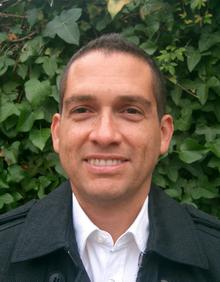On 29 February 2016, I attended a meeting in Westminster that was jointly organised by the UK Hydrogen and Fuel Cell Association (UKFCA) and Carbon Connect with the aim of discussing current challenges in the decarbonisation of heat generation in the UK. The panel included David Joffe (Committee on Climate Change), Dr. Marcus Newborough (ITM Power), Ian Chisholm (Doosan Babcock), Klaus Ullrich (Fuel Cell Energy Solutions), Phil Caldwell (Ceres Power) and was chaired by Dr Alan Whitehead MP and Shadow Energy Minister. The attendees included a number of key players in the field of hydrogen production, fuel cell and renewable energy industries, as well as organisations such as the Department for Energy and Climate Change (DECC).
To set the scene, I would like to quote some facts and figures from the 2015 Carbon Connect report on the Future of Heat (part II).
- The 2025 carbon reduction target is 404.4 MtCO2e (million metric tons of carbon dioxide equivalent), but the reduction levels as of 2014 have only been 288.9 MtCO2e. The current Government’s low carbon policy framework is woefully inadequate to bridge this gap.
- The government introduced the Renewable Heat Incentive in 2011, with the ambition of increasing the contribution of renewable energy source to 12% of the heat demand by 2020. Some of the initiatives include biomass, “energy from waste” and geothermal. However, clear policies and financial incentives are nowhere to be seen.
- What is the current situation of renewable heat and how good is the 12% target? The good news is that there is a slight increase in the renewable share from 2004. The really bad news is that the contribution as of 2013 is just 2.6%. The UK is further behind any other EU state with regards to its renewable heat target. Sweden has a whopping 67.2% contribution and Finland 50.9%.
Towards a decarbonised energy sector, two important networks should be considered, electrical and gas. Electrification of heat is very well suited for low carbon heat generation, however, the electricity demands at peak time could be extremely costly. The UK’s gas network is a major infrastructure which is vital for providing gas during peak heat demand. However, it needs to be re-purposed in order to carry low carbon gas such as bio-methane, hydrogen or synthetic natural gas.
It was clear from the debate that hydrogen can play an important role in decreasing carbon emissions even within the current gas network. The introduction of up to 10% of hydrogen into gas feed can still be compatible with current gas networks and modern appliances, while generating a significant carbon emission reduction. However, where is the hydrogen coming from? For heat production at the national scale, steam reforming is the only player. However, with the government pulling away from carbon capture and storage (CCS), this option cannot provide a significant reduction in carbon emissions. Capital costs associated with electrolysers would not be able to deliver the amount of hydrogen required at peak demands. The frustration in this community with regards to the future of CCS was palpable during the networking session.
We need hydrogen, generated from renewable energy sources… but the question is how?
———————–
This blog is written by Cabot Institute member David J. Fermin, Professor of Electrochemistry in the University of Bristol’s School of Chemistry. His research group are currently looking at the direct conversion of solar energy to chemical fuels, in particular hydrogen; the conversion of CO2 to fuels; and electrocatalysts for energy vectors (e.g. what you put in fuel cells and electrolysers).
 |
| David Fermin |
David will be giving a free talk on the challenges of solar energy conversion and storage on Tuesday 12 April 2016 at 6.15 pm at the University of Bristol. To find out more and to book your ticket, visit the University of Bristol’s Public and Ceremonial Events web page.



